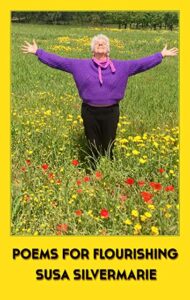An Ajijic artist, Maria Lupita Vega Velazquez, has perfected a technique for handstitched thread painting. Known also as needle painting, painting with thread produces works of art on fabric. Almost all of what is online about thread art refers to creating with a sewing machine. Vega Velásquez, however, and her current local thread artist apprentices, create their art imagery through thread painting by hand. Combining long and short stitches in dense hand stitching, using a palette of thread colors in close proximity, they create lifelike images with shadows and highlights and touchable texture. In the original work of these Ajijic artists, the threads thus mixed create depth and shadow to tell a story.
Vega Velásques has been recognized at the annual Feria Maestros de Arte, the Mexican folk & indigenous art show in Chapala, to which buyers and collectors come from around the world to purchase the highest quality Mexican art. Yet the thread art she is now teaching has rarely been recognized by the art supporters and promoters in her community of Ajijic. When I ask why, she quotes the proverb, “A prophet (artist) is without honor in his own country.” In this case the quote might be more applicable regarding a female prophet (or artist)Sampler. Stitch art has traditionally been viewed as women’s work, and as such, has been undervalued. The form has yet to receive the contemporary acknowledgement it well deserves.
In the past, Vega Velásquez explains, embroidery designs were often copied from shop to shop, and the skill level was such that designs were filled in with solid colors rather than created as originals. But she has created designs and developed techniques that have not been seen before. Here is how the Feria Maestros de Arte describes her work: Her Mexican designs are individual and sophisticated. Her birds are often embroidered in silk to show their iridescence, each feather individually stitched. Her flowers are frequently so complicated and detailed that eight different colors may be discovered in one petal. Her techniques are of her own creation — totally unique, one-of-a-kind items, not to be seen anyplace else.
She has committed to teaching two six-month courses to local women for free. She feels an urgent desire to pass on as legacy the techniques she has originated, as she takes great pride in her artistic community and feels very strongly that this part of her culture must not be lost. The Lake Chapala Society has generously offered the use of their Ken Gosh Pavilion and bought all the initial materials needed for the two courses. Presently, there are twenty women enrolled in the course. They meet on Monday, Wednesday and Friday at 4 p.m at the LCS, and though the classes are in Spanish, English speakers are welcome
The first public Exposition of the work of these Ajijic thread artists took place March 3 and March 4 at the Lake Chapala Society, and was a great success. When the second course ends next November, the thread artists will seek a space for their final Exposition. If you are able to help in any way, you may contact Ma. Lupita through the Lakeside Creations Women’s Coop on Ramon Corona, kitty-corner from the LCS entrance It is time for this hidden original art of Ajijic to become a local public treasure.
